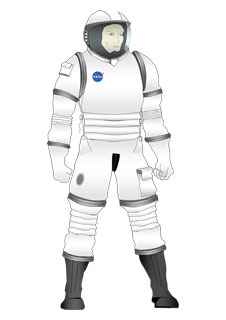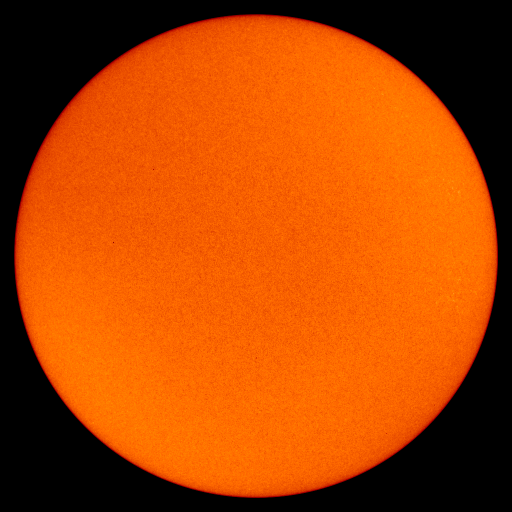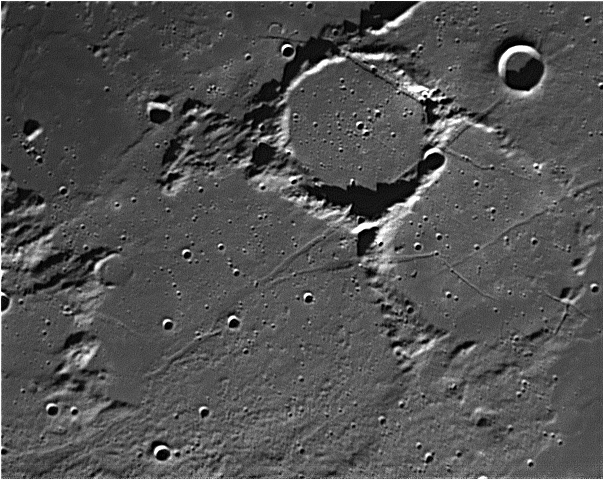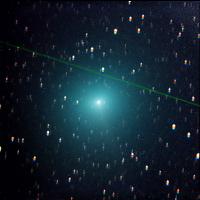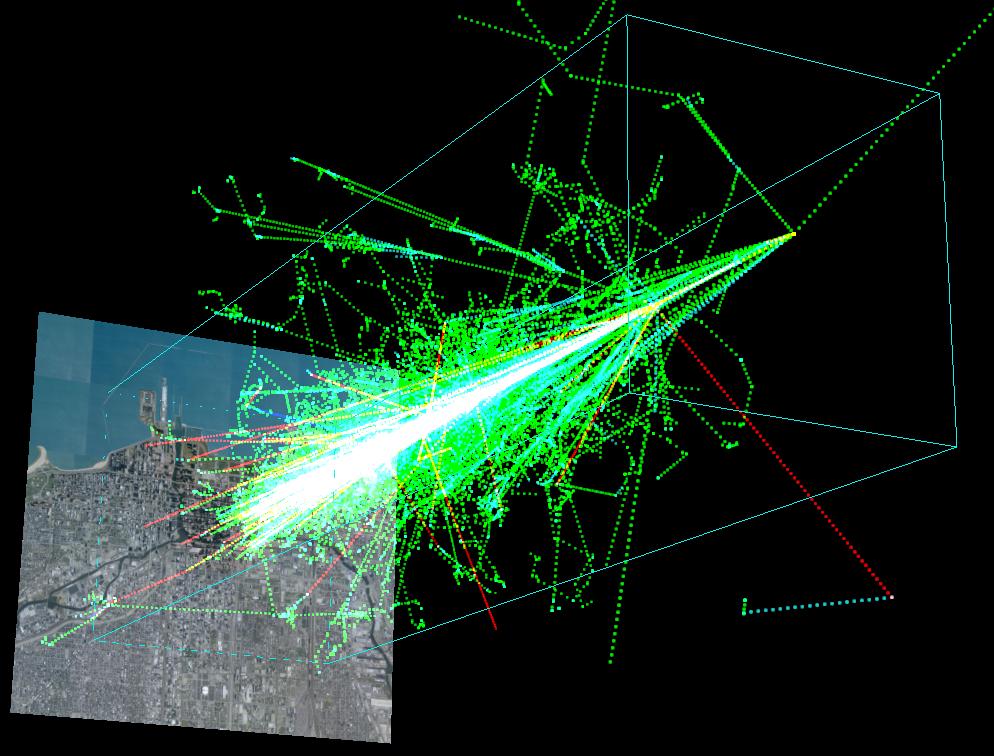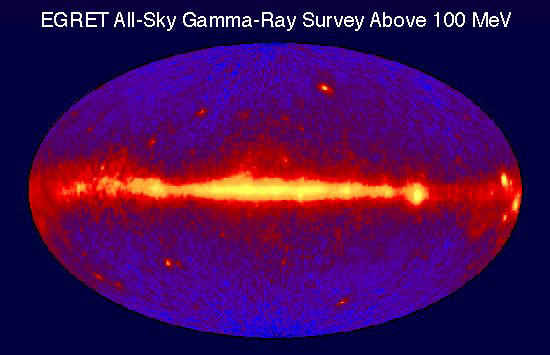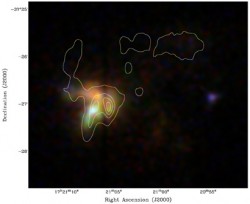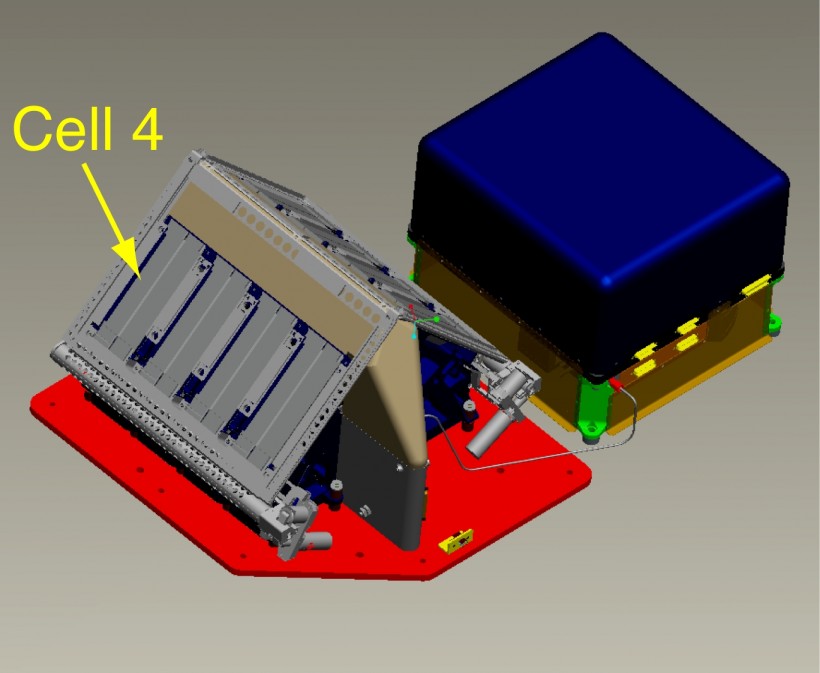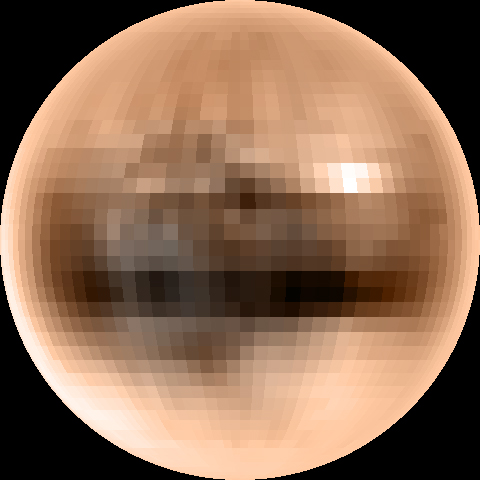Greetings, fellow SkyWatchers! It’s big… It’s bright… It’s the Moon! The greatest night sky light polluter is back on the scene, but that doesn’t mean we can’t have a great time as we use telescopes or binoculars to explore the Apollo 14 mission landing site. We’ll continue to visit the lunar surface this weekend, as well as take a look at double stars and two arriving meteor showers. Sky to bright to see meteors? Then let’s try something new….
Friday, June 13 – Today in 1983, Pioneer 10 became the first man made object to leave the solar system. What wonders would it see? Are there other galaxies out there like our own? Will there be life like ours? While we can’t see through Pioneer’s “eyes,” tonight let’s take an historic journey to the Moon, as we look at the northeast shore of Mare Cognitum and the Apollo 14 mission landing site – Fra Mauro.
As craters go, 3.9 billion year old Fra Mauro is on the shallow side and spans 95 kilometers. At some 730 meters deep, standing at the foot of one of its walls would be like standing at the bottom of the Grand Canyon… Yet, time has so eroded this crater that its west wall is completely missing and its floor is covered with fissures.
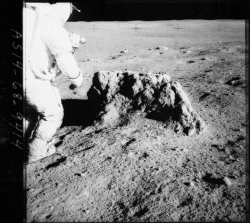 Even though ruined Fra Mauro seems like a forbidding place to land a manned mission, it remained high on the priority list because it is geologically rich. Ill-fated Apollo 13 was to land in a formation north of the crater which was formed by ejecta belonging to the Imbrium Basin – material which had already been mapped telescopically. By returning samples of this material from deep within the Moon’s crust, scientists would have been able to determine the exact time these changes came about.
Even though ruined Fra Mauro seems like a forbidding place to land a manned mission, it remained high on the priority list because it is geologically rich. Ill-fated Apollo 13 was to land in a formation north of the crater which was formed by ejecta belonging to the Imbrium Basin – material which had already been mapped telescopically. By returning samples of this material from deep within the Moon’s crust, scientists would have been able to determine the exact time these changes came about.
As you view Fra Mauro tonight, picture yourself in a lunar rover traversing this barren landscape and viewing the rocks thrown out from a long-ago impact. How willing would you be to take on the vision of others and travel to another world?
Saturday, June 14 – As the day begins and you wait on dawn, keep watch for the peak of the Ophiuchid meteor shower with its radiant near Scorpius. The fall rate is poor with only three per hour, but fast moving bolides are common. Today is about the midpoint – and the activity peak – of this 25 day long stream.
Too moony to see anything? Then try an experiment both Ian and I have been working on. When a meteoroid enters our atmosphere, it has an impact on the ionosphere. Take a few moments and download Google Ionosphere and watch what happens as the meteor shower progresses! And don’t forget the “radio” either… Simply tune any FM radio to the lowest frequency that doesn’t receive a clear signal and listen. These ionospheric disturbances will sound like snatches of radio signal, hisses, pops and more. It’s a great way to catch a meteor shower with more than just your eyes!
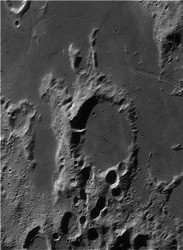 Tonight let’s venture toward the south shore of Palus Epidemiarum to have a high power look at crater Capuanus. Named for Italian astronomer Francesco Capuano di Manfredonia, this 60 kilometer wide crater boasts a still-tall southwest wall, but the northeast one was destroyed by lava flow. At its highest, it reaches around 1900 meters above the lunar surface, yet drops to no more than 300 meters at the lowest. Look for several strikes along the crater walls as well as more evidence of a strong geological history. To its north is the Hesiodus Rima…a huge fault line extending 300 kilometers across the surface!
Tonight let’s venture toward the south shore of Palus Epidemiarum to have a high power look at crater Capuanus. Named for Italian astronomer Francesco Capuano di Manfredonia, this 60 kilometer wide crater boasts a still-tall southwest wall, but the northeast one was destroyed by lava flow. At its highest, it reaches around 1900 meters above the lunar surface, yet drops to no more than 300 meters at the lowest. Look for several strikes along the crater walls as well as more evidence of a strong geological history. To its north is the Hesiodus Rima…a huge fault line extending 300 kilometers across the surface!
To the east, Jupiter is now rising… But give it some time to clear the atmospheric distortion! By far brighter than neighboring stars to the unaided eye, giant Jupiter will move slowly along the ecliptic plane over the course of the evening. To smaller binoculars it is easily observed as an orb with two grey bands across the middle. To larger binoculars, the equatorial belts become much clearer and the four Galilean moons are easily seen with steady hands. To the small telescope, no planet offers greater details. Even at very low magnifying power, the north, south and central equatorial zones are easily observable and all four moons are clear and steady.
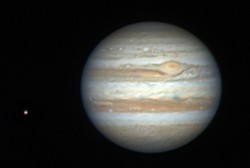 For most observers, tonight will show Callisto, Ganymede, Europa and Io grouped to the east of the Mighty Jove, but as time progresses, so do their positions! Try observing over a period of several hours and watch just how quickly these four bright moons shuttle around… You might even catch a possible transit of Io!
For most observers, tonight will show Callisto, Ganymede, Europa and Io grouped to the east of the Mighty Jove, but as time progresses, so do their positions! Try observing over a period of several hours and watch just how quickly these four bright moons shuttle around… You might even catch a possible transit of Io!
To the mid-sized telescope, far greater details begin to appear – such as temperate belts on the planet’s surface and the soft appearance of the Great Red Spot. Finer details are visible during steady seeing, and small things like being able to see which satellite is closer to – or further away from – our vantage point become very easy. Simple things, like watching a moon transit the surface and the resulting shadow on the planet are much easier. With a large telescope, seeing details on Jupiter depends more on seeing conditions. While more aperture allows finer views – conditions are everything when it comes to the Mighty Jove!
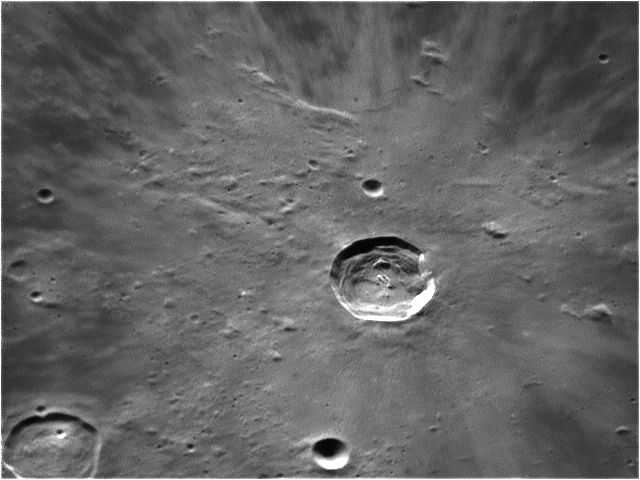 Sunday, June 15 – As we wait on the sky to darken tonight, let’s start our adventures by taking a close look at crater Kepler. Situated just north of central along tonight’s terminator, this great crater named for Johannes Kepler only spans 32 kilometers, but drops to a deep 2750 meters below the surface. This class I crater is a geological hotspot!
Sunday, June 15 – As we wait on the sky to darken tonight, let’s start our adventures by taking a close look at crater Kepler. Situated just north of central along tonight’s terminator, this great crater named for Johannes Kepler only spans 32 kilometers, but drops to a deep 2750 meters below the surface. This class I crater is a geological hotspot!
As the very first to be mapped by the U.S. Geological Survey, the area around Kepler contains many smooth lava domes reaching no more than 30 meters above the plains. According to records, in 1963 a glowing red area was spotted near Kepler and extensively photographed. Normally one of the brightest regions of the Moon, the brightness value at the time nearly doubled! Although it was rather exciting, scientists later determined the phenomenon was caused by high energy particles from a solar flare reflecting from Kepler’s high albedo surface. In the days ahead all details around Kepler will be lost, so take this opportunity to have a good look at one awesome small crater!
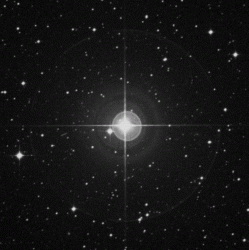 When skies are dark, it’s time to have a look at the 250 light-year distant silicon star Iota Librae (RA 15 12 13 Dec 19 47 28). This is a real challenge for binoculars – but not because the components are so close. In Iota’s case, the near 5th magnitude primary simply overshadows its 9th magnitude companion! In 1782, Sir William Herschel measured them and determined them to be a true physical pair. Yet, in 1940 Librae A was determined to have an equal magnitude companion only 0.2 arcseconds away… And the secondary was proved to have a companion of its own which echoes the primary. A four star system!
When skies are dark, it’s time to have a look at the 250 light-year distant silicon star Iota Librae (RA 15 12 13 Dec 19 47 28). This is a real challenge for binoculars – but not because the components are so close. In Iota’s case, the near 5th magnitude primary simply overshadows its 9th magnitude companion! In 1782, Sir William Herschel measured them and determined them to be a true physical pair. Yet, in 1940 Librae A was determined to have an equal magnitude companion only 0.2 arcseconds away… And the secondary was proved to have a companion of its own which echoes the primary. A four star system!
No matter if you stayed up late chasing deep sky, or got up early, right now is the time to catch the peak of the June Lyrids meteor shower. Although the Moon will make observing difficult, it’s still an opportunity for those wishing to log their meteor observations. Look for the radiant near bright Vega – you may see up to 15 faint blue meteors per hour from this branch of the May Lyrid meteor stream. Try the ionosphere and radio observing!!
Wishing you clear skies and a great weekend…
This week’s image credits: Detail view of Fra Mauro, Capuanus, Kepler and Jupiter – Credit: Wes Higgins, Shepard at Frau Mauro – Credit: NASA, Iota Librae – Credit: Palomar Observatory, courtesy of Caltech.



